Shinjitsu Audio Carbon Daisho Loudspeaker by Terry London
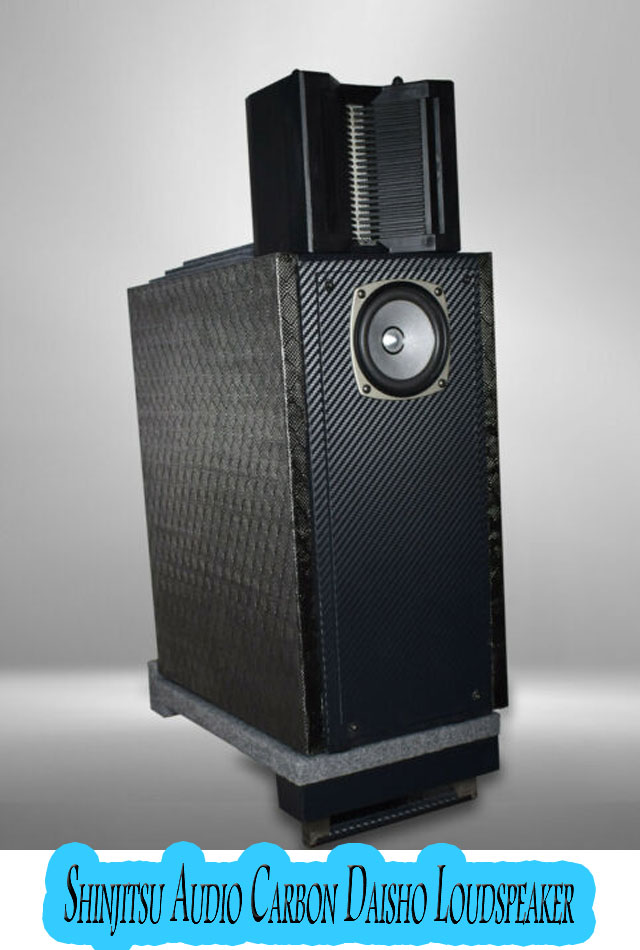
 Over my career of professionally reviewing I have always gotten great pleasure out of discovering small American artisan companies that design and manufacture hand-built, high-quality, and reasonably priced gear for the audiophile community. I recently came across such a speaker company, Shinjitsu Audio located in Mesa, Arizona. Their approach to building their reference model, the Carbon Daisho, which retails for $2,995/pair and includes two carbon fiber/MDF plinths to get the proper rake angle for each speaker, piqued my interest to set up a review in two ways.
Over my career of professionally reviewing I have always gotten great pleasure out of discovering small American artisan companies that design and manufacture hand-built, high-quality, and reasonably priced gear for the audiophile community. I recently came across such a speaker company, Shinjitsu Audio located in Mesa, Arizona. Their approach to building their reference model, the Carbon Daisho, which retails for $2,995/pair and includes two carbon fiber/MDF plinths to get the proper rake angle for each speaker, piqued my interest to set up a review in two ways.
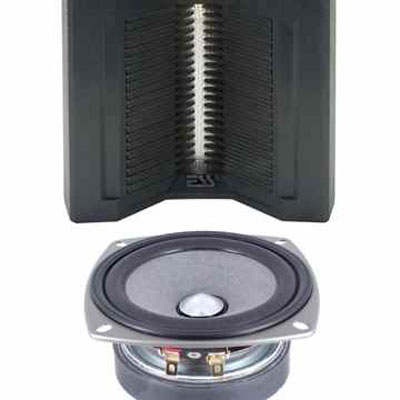 First, I have a history of owning speakers that use different versions of Dr. Oscar Heil’s famous AMT (air motion transformer) driver. If the AMT used is a quality driver and is setup the right way it can provide beautiful midrange and high-frequency sound. I had a four year run with the wonderful Lawrence Audio Cello speakers that used a pair of them for midrange and tweeter drivers. Shinjitsu Audio scores their AMT transducer from Dr. Heil’s original company, ESS Laboratories and uses their largest and most expensive version of this driver. Secondly, I have always enjoyed speakers that use a back-loaded horn incorporated in their design. If is done correctly, and the designer really has to know what they are doing because it’s an art to fine-tune it by ear, not just by measurements, and it is time-consuming and expensive to build. If done right it can provide an amazingly accurate and tonally correct bass extension from a small driver and cabinet. In the Carbon Daisho speaker a Fostex 4” double-layer wooden pulp driver’s back wave is loaded into a 5.5 ft. in length back loaded horn which fits into a compact backported 17” tall enclosure. The Chief Designer of Shinjitsu Audio, Morris Emerick (photo below), explained that the back-loaded horn design used in the Carbon Daisho speaker is based on a famous 1993 Japanese folded horn design and modified for use in his model. If you are wondering what do Shinjitsu and Daisho mean in Japanese, Shinjitsu means “truth” and Daisho translates into a “matched pair of samurai swords.”
First, I have a history of owning speakers that use different versions of Dr. Oscar Heil’s famous AMT (air motion transformer) driver. If the AMT used is a quality driver and is setup the right way it can provide beautiful midrange and high-frequency sound. I had a four year run with the wonderful Lawrence Audio Cello speakers that used a pair of them for midrange and tweeter drivers. Shinjitsu Audio scores their AMT transducer from Dr. Heil’s original company, ESS Laboratories and uses their largest and most expensive version of this driver. Secondly, I have always enjoyed speakers that use a back-loaded horn incorporated in their design. If is done correctly, and the designer really has to know what they are doing because it’s an art to fine-tune it by ear, not just by measurements, and it is time-consuming and expensive to build. If done right it can provide an amazingly accurate and tonally correct bass extension from a small driver and cabinet. In the Carbon Daisho speaker a Fostex 4” double-layer wooden pulp driver’s back wave is loaded into a 5.5 ft. in length back loaded horn which fits into a compact backported 17” tall enclosure. The Chief Designer of Shinjitsu Audio, Morris Emerick (photo below), explained that the back-loaded horn design used in the Carbon Daisho speaker is based on a famous 1993 Japanese folded horn design and modified for use in his model. If you are wondering what do Shinjitsu and Daisho mean in Japanese, Shinjitsu means “truth” and Daisho translates into a “matched pair of samurai swords.”
The review pair of Carbon Daisho speakers, of course, came clad in carbon fiber with wasp patterned side panels. Underneath, the carbon fiber damping is a HDF enclosure along with the 5.5 ft. labyrinth which is hand-built with HDF material. Externally, beneath the carbon fiber, the enclosure is lined with Acoustic Mac damping that is used to kill off any distortion producing spurious vibrations. All internal wiring is comprised of military spec silver over copper Teflon coated cables. The crossover uses one Solen coil and two high-quality Clarity capacitors. The crossover design is a 2nd order Bessel minimum phase with 1st order high pass to insure optimal time/phase alignment. On the back, there are dual Viberg Audio red copper speaker wire terminals. In between these terminals are inputs for the provided Mundorf resistors to attenuate/adjust the high frequencies based on personal taste and room acoustics. I found that no attenuation was necessary for my enjoyment during the reviewing process.
 The Carbon Daisho speaker’s dimensions are 17” H x 9” W x 14” D. The ESS AMT driver sits on top of the enclosure and adds another 6” in height. Each speaker weighs 52 pounds. Behind the ESS AMT driver there is a platform of damping material to absorb any reflections that would bounce off the top of the enclosure because the driver is used in a dipole fashion. The Carbon Daisho speaker’s sensitivity is 92 dB and it presents an 8-Ohm load to the amplifier. Its frequency range is 45Hz to 20Khz. It took Mr. Emerick over two years of development to get the Carbon Daisho speaker to the level of performance that satisfied him and his listening panel’s ears. You can see the effort and care that went into building these little “high-tech” looking floor-standers. I drove them with both low wattage SET tube amplifiers and high wattage/current solid-state amplifiers. The Carbon Daisho speakers were placed three feet off the front wall, four feet off the sidewalls, and were positioned six feet apart from each other with a slight toe-in. They were easy to get optimum performance out of, with one caveat. When I put the plinth and speaker on top of a six-inch riser, wooden boxes I had custom-built for use with other speakers, the height of the sound-stage became unbelievably realistic in its dimensions in my acoustic space. I would recommend that Shinjitsu Audio consider building a taller plinth (the rake angle was perfect either way) or riser to place both plinth/speaker on top of to get this same wonderful realistic increase of the soundstage height. Now, on to how these speakers, most importantly, performed in the auditory domain!
The Carbon Daisho speaker’s dimensions are 17” H x 9” W x 14” D. The ESS AMT driver sits on top of the enclosure and adds another 6” in height. Each speaker weighs 52 pounds. Behind the ESS AMT driver there is a platform of damping material to absorb any reflections that would bounce off the top of the enclosure because the driver is used in a dipole fashion. The Carbon Daisho speaker’s sensitivity is 92 dB and it presents an 8-Ohm load to the amplifier. Its frequency range is 45Hz to 20Khz. It took Mr. Emerick over two years of development to get the Carbon Daisho speaker to the level of performance that satisfied him and his listening panel’s ears. You can see the effort and care that went into building these little “high-tech” looking floor-standers. I drove them with both low wattage SET tube amplifiers and high wattage/current solid-state amplifiers. The Carbon Daisho speakers were placed three feet off the front wall, four feet off the sidewalls, and were positioned six feet apart from each other with a slight toe-in. They were easy to get optimum performance out of, with one caveat. When I put the plinth and speaker on top of a six-inch riser, wooden boxes I had custom-built for use with other speakers, the height of the sound-stage became unbelievably realistic in its dimensions in my acoustic space. I would recommend that Shinjitsu Audio consider building a taller plinth (the rake angle was perfect either way) or riser to place both plinth/speaker on top of to get this same wonderful realistic increase of the soundstage height. Now, on to how these speakers, most importantly, performed in the auditory domain!
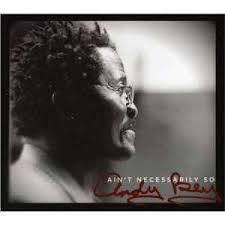 My first selection by one of my favorite male jazz singers was Andy Bey’s album “Ain’t Necessarily So,” which was recorded live at the Birdland Club, NY in 1997. This allows me to get a take on how well a speaker handles the distinct timbres and tonality of Mr. Bey’s voice. Another sonic parameter that this recording allows me to evaluate is how well a speaker handles the spatiality of creating a sense of a life-sized soundstage, where each player is located, and the ambience of the space where the music was recorded. Because of the wonderful ESS AMT driver, which is blended seamlessly with cone midrange/bass driver, Andy Bey’s voice came through with his unique timbres and smooth yet husky tonality. The Carbon Daisho speaker had startling transient clarity. It’s quick/fast and gives you all the micro-details, good or bad, in the music. It will not have a euphonic influence to make bad recordings sound better. However, if the recording, like this one, is well recorded it allows you to connect emotionally with the artist because all nuances of their phrasing/breathing are easily heard. The next experience I had listening to this album, through the Carbon Daisho speaker, was that I had been transported to that venue in an almost “spooky” manner because of the tremendous sound-stage depth, height, and wall to wall spatiality. If I did not know what type or size speaker I was listening to, I would have sworn I was in front of a large electrostatic planer design for two reasons; 1) Clarity/micro-details and see-through transparency. 2) A box-less presentation of a giant, with venue ambience, sound-stage in all directions. I would attribute this to the using the ESS AMT transducer as a dipole, mimicking an open baffle arrangement without damping/killing off the backward firing wave. It still was a very powerful disconnect. Visually, these two little speakers, yet sonically it sounds like a pair of MG-20.7s or a Martin Logan Expression ESL 13A.
My first selection by one of my favorite male jazz singers was Andy Bey’s album “Ain’t Necessarily So,” which was recorded live at the Birdland Club, NY in 1997. This allows me to get a take on how well a speaker handles the distinct timbres and tonality of Mr. Bey’s voice. Another sonic parameter that this recording allows me to evaluate is how well a speaker handles the spatiality of creating a sense of a life-sized soundstage, where each player is located, and the ambience of the space where the music was recorded. Because of the wonderful ESS AMT driver, which is blended seamlessly with cone midrange/bass driver, Andy Bey’s voice came through with his unique timbres and smooth yet husky tonality. The Carbon Daisho speaker had startling transient clarity. It’s quick/fast and gives you all the micro-details, good or bad, in the music. It will not have a euphonic influence to make bad recordings sound better. However, if the recording, like this one, is well recorded it allows you to connect emotionally with the artist because all nuances of their phrasing/breathing are easily heard. The next experience I had listening to this album, through the Carbon Daisho speaker, was that I had been transported to that venue in an almost “spooky” manner because of the tremendous sound-stage depth, height, and wall to wall spatiality. If I did not know what type or size speaker I was listening to, I would have sworn I was in front of a large electrostatic planer design for two reasons; 1) Clarity/micro-details and see-through transparency. 2) A box-less presentation of a giant, with venue ambience, sound-stage in all directions. I would attribute this to the using the ESS AMT transducer as a dipole, mimicking an open baffle arrangement without damping/killing off the backward firing wave. It still was a very powerful disconnect. Visually, these two little speakers, yet sonically it sounds like a pair of MG-20.7s or a Martin Logan Expression ESL 13A.
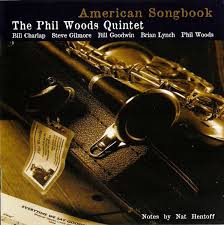 Next up was the great Bebop Alto Saxophonist Phil Wood’s album, “American Songbook” which features Brain Lynch on trumpet and Bill Charlap on piano. This is a reference level recording when it comes to presenting all their instruments with natural/organic colors and tonality in a crystal clear manner. Again, the Carbon Daisho speaker delivered these instruments timbres/colors with extreme purity. The top-end frequencies had an excellent extension with a “shimmer” that a fast driver like the ESS AMT can deliver because of its quickness and speed. There is not a “hint” of warmth in this speaker. The Carbon Daisho speaker is not cold or steely, but very neutral and revealing. When I used great tube amplification it delivered the liquidity and warmth that a 2A3 tube delivers. I believe that a match made in sonic heaven would a great EL-34 or 300b based amplifier driving a pair of Carbon Daisho in a relatively small acoustic space. My Coda and Threshold amplifiers that are grain-less/smooth and present music in an accurate way tonality also sounded great with this speaker. However, if you drive this Shinjitsu Audio pair of speakers with any upstream gear that is lean/analytical/bright/ it would not be a pleasant listening experience.
Next up was the great Bebop Alto Saxophonist Phil Wood’s album, “American Songbook” which features Brain Lynch on trumpet and Bill Charlap on piano. This is a reference level recording when it comes to presenting all their instruments with natural/organic colors and tonality in a crystal clear manner. Again, the Carbon Daisho speaker delivered these instruments timbres/colors with extreme purity. The top-end frequencies had an excellent extension with a “shimmer” that a fast driver like the ESS AMT can deliver because of its quickness and speed. There is not a “hint” of warmth in this speaker. The Carbon Daisho speaker is not cold or steely, but very neutral and revealing. When I used great tube amplification it delivered the liquidity and warmth that a 2A3 tube delivers. I believe that a match made in sonic heaven would a great EL-34 or 300b based amplifier driving a pair of Carbon Daisho in a relatively small acoustic space. My Coda and Threshold amplifiers that are grain-less/smooth and present music in an accurate way tonality also sounded great with this speaker. However, if you drive this Shinjitsu Audio pair of speakers with any upstream gear that is lean/analytical/bright/ it would not be a pleasant listening experience.
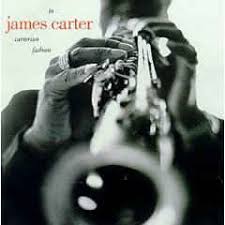 My final selection was tenor/alto/baritone saxophonist James Carter explosive album, “In Carterian Fashion,” which would evaluate how the Carbon Daisho speaker could handle deep organ bass pedal runs, along with micro-dynamics when the total band was playing at crescendo Db levels. First, the Carbon Daisho speaker did very well on the very low bass pedal frequencies. This did not surprise me because of the highly crafted back loaded horn design arrangement of the small bass/midrange driver. When I got to very high dB levels (around 95 dB) there was a slight hardening of the overall sound with some brightness in the higher frequencies. I would attribute this to driving the ESS AMT a little harder that it liked to keep its composure. Actually, I rarely play my smaller system this loud, it’s not necessary to get to the “sweet spot” regarding getting good macro-dynamics/sense of aliveness and full extension of spatial aspects of the music.
My final selection was tenor/alto/baritone saxophonist James Carter explosive album, “In Carterian Fashion,” which would evaluate how the Carbon Daisho speaker could handle deep organ bass pedal runs, along with micro-dynamics when the total band was playing at crescendo Db levels. First, the Carbon Daisho speaker did very well on the very low bass pedal frequencies. This did not surprise me because of the highly crafted back loaded horn design arrangement of the small bass/midrange driver. When I got to very high dB levels (around 95 dB) there was a slight hardening of the overall sound with some brightness in the higher frequencies. I would attribute this to driving the ESS AMT a little harder that it liked to keep its composure. Actually, I rarely play my smaller system this loud, it’s not necessary to get to the “sweet spot” regarding getting good macro-dynamics/sense of aliveness and full extension of spatial aspects of the music.
Here’s, my conclusion regarding the Shinjitsu Audio Carbon Daisho speaker. It is an extremely well-built design using excellent internal parts, first-rate transducers and uses a very innovative back loaded horn approach to produce a great base foundation to the music in a very small cabinet. It offers an easy load that can be driven by low watt tube or solid-state amplifiers. As I shared in the review, to get it to its ultimate level of performance you need to place it on a riser about six inches off the ground. I would recommend that Mr. Emerick consider changing the height of the plinth or include a riser to address this one concern. I believe that if you have a small acoustic space, and have always loved big electrostatic panels for their box-less spatial quality, see-through transparency, transient speed, micro-details, and purity in overall tonality, the Carbon Daisho speaker would be a great match for your system and listening environment. Big panels do not do well in smaller acoustic spaces. However, this speaker does perform at a very high level, just like a planer in a large acoustic space. So, if you always dreamed about owning one of those large panel designs and just don’t have the room, I suggest you audition a pair of Carbon Daisho speakers. A great safety net for you is that Shinjitsu Audio has a 30-day return policy, if for any reason you are not satisfied.


terry london
Specifications:
Price: $2,995 pair
o All HDF labyrinth construction with Carbon Fiber cladding and AcoustiMac damping explores the limits of size versus full range status. Speed, tonality and focus pairs with a frequency response from 45Hz to 20Khz. Heil Air Motion Transformer enhanced for extended high frequency response and lower distortion.
o HDF and Carbon Fiber construction with Wasp Patterned side panels. Japanese Folded Horn Design with dual Viborg Audio Red Copper Bi-Amp terminals. Mil Spec Silver over Copper Teflon internal wire.
o Adjustable Mundorf resistor attenuation to adjust high frequency tones. Audiophile crossover design utilizing one Solen coil and two high quality Clarity Capacitors.
o Heil Air Motion Transformer Enhanced with wider sound stage and lowered high frequency distortion.
o Efficient enough for low powered tube amplifiers and rugged enough to produce room filling sound using amplifiers of all power ratings.
o Carbon Fiber and MDF plinth included for proper elevation angle.
o Japan designed back loaded horn design is folded from 5.5 FT in length to fit into a compact enclosure only 27 Inches tall.
Address:
Shinjitsu Audio
Mesa, AZ 85212
Website: www.shinjitsuaudio.com
Terry’s Associated Equipment
Sources:
Mhdt Lab Orchid & Balanced Pagoda
Bricasti Design M3
Rockna Wavelight
Pass Labs DAC-1 Jay’s Audio MK-II transport
Amplification:
Coda FET 07x preamplifier
Coda NO 16.0 amplifier
Threshold 550e amplifier
Triode Lab SET 2A3 amplifier
Pass Labs XA-25 amplifier
Aric Audio ML II preamplifier
Linear Tube Audio reference preamplifier
Loudspeakers:
NSMT Loudspeakers Model 100
Tekton Design Ulfberth & Perfect Set
Accessories:
Full loom Black Cat Cables Coppertone & Digit 110 AES/EBU-3202 XLR interconnects-3232 speaker wire
Krolo Design rack & footers
Puritan Labs Design power conditioner
Audio Archon power cords
One thought on "Shinjitsu Audio Carbon Daisho Loudspeaker by Terry London"
Leave a Reply
Stereo Times Masthead
Publisher/Founder
Clement Perry
Editor
Dave Thomas
Senior Editors
Frank Alles, Mike Girardi, Russell Lichter, Terry London, Moreno Mitchell, Paul Szabady, Bill Wells, Mike Wright, and Stephen Yan,
Current Contributors
David Abramson, Tim Barrall, Dave Allison, Ron Cook, Lewis Dardick, John Hoffman, Dan Secula, Don Shaulis, Greg Simmons, Eric Teh, Greg Voth, Richard Willie, Ed Van Winkle, Rob Dockery, Richard Doran, and Daveed Turek
Site Management Clement Perry
Ad Designer: Martin Perry



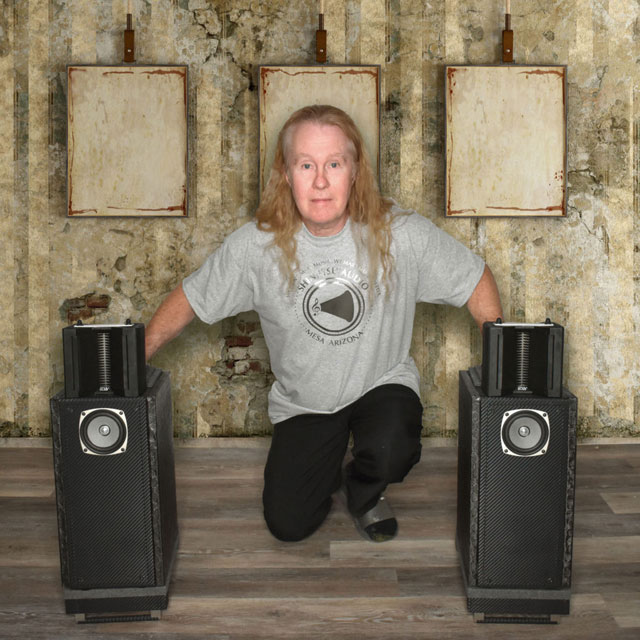
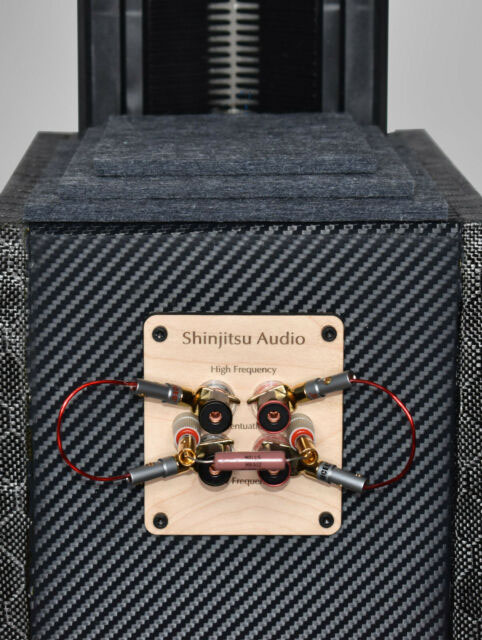
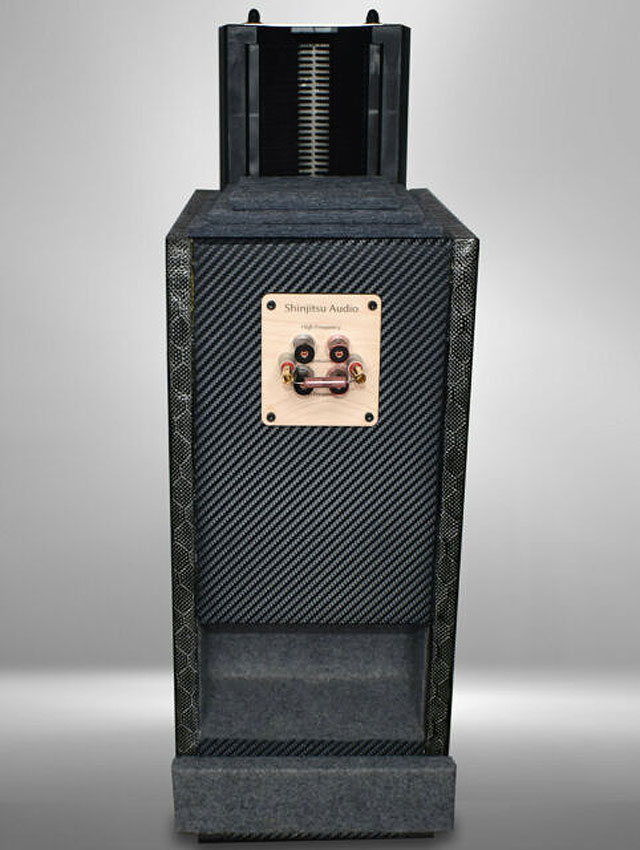
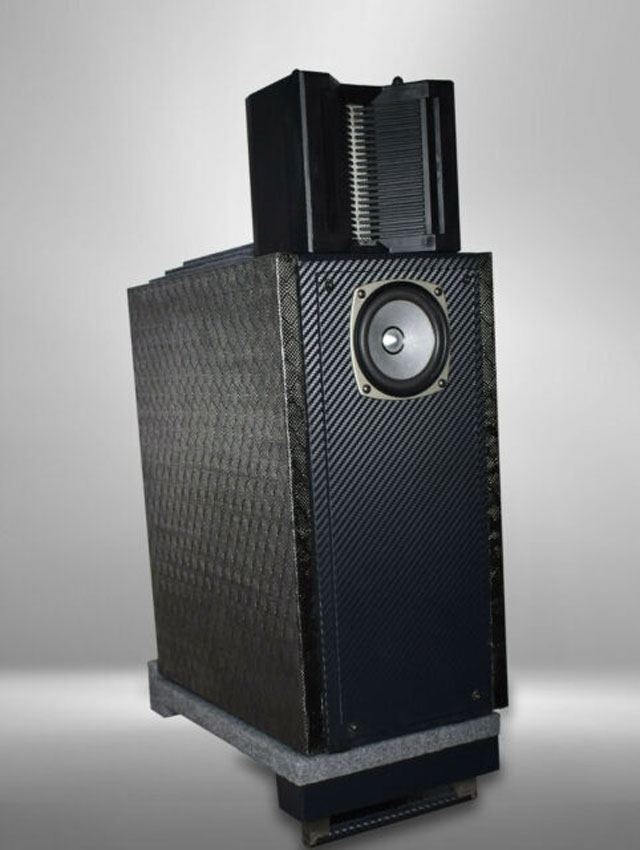





I am partnered with NIGHTINGALE AUDIO for an exhibit at THE Show in Costa Mesa this June.
Please advise you would consider letting us purchase a pair of the Carbon Heil speakers for a very reasonable investment!
Kevin 510-390-0856
GIDEON AUDIO